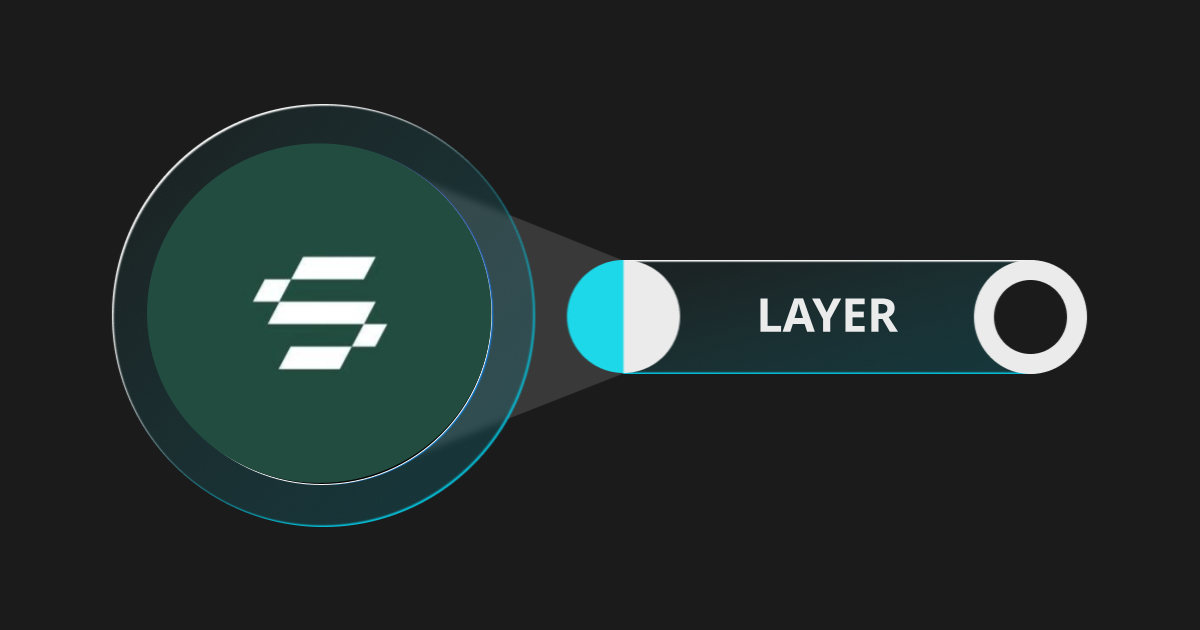
Solayer (LAYER): Enhancing Liquidity and DeFi on Solana
What is Solayer (LAYER)?
Solayer (LAYER) is a layer-2 blockchain built on top of Solana that aims to enhance liquidity and scalability of Solana. Solayer is designed to be a universal liquidity layer for dApps and liquidity-represented tokens (LRTs). In other words, Solayer enables Solana users to unlock more value from their SOL tokens by allowing them to be used in various ways beyond just staking or holding.
Through Solayer, every unit of SOL can be thought of as a unit of blockspace that supports and secures network bandwidth. This helps dApps run more efficiently and reduces congestion on the blockchain. It’s like renting out your SOL to provide space for apps to function smoothly, while still keeping your tokens active and earning rewards.

Who Created Solayer (LAYER)?
Solayer was created by a team of experienced developers and blockchain enthusiasts who recognized the growing need for better liquidity solutions within the Solana ecosystem. They weren’t newcomers to the crypto world – they’ve been around long enough to understand the challenges that developers and users face when trying to make the most out of their Solana investments.
Though specific details about the core team remain somewhat private, Solayer’s creators emphasize their commitment to solving the liquidity and scalability issues faced by Solana.
What VCs Back Solayer (LAYER)?
Solayer has attracted support from a number of venture capital firms, including Maelstrom Fund, Finality Capital Partners, Binance Labs, Polychain Capital, Wormhole Cross-chain Ecosystem Fund, etc.
How Solayer (LAYER) Works
Solayer operates on a simple yet powerful concept: using sSOL to bridge liquidity between Solana’s blockchain and dApps. At its core, the sSOL-SOL liquidity pool is designed to improve capital efficiency, reduce slippage, and enhance the overall performance of decentralized financial services. Here's a breakdown of how Solayer works:
1. Liquidity Layer with sSOL
sSOL is the key asset in the Solayer ecosystem. It is a yield-bearing token that represents liquidity on the Solana blockchain. When users delegate their SOL tokens to Solayer, they receive sSOL in return. These sSOL tokens can then be used to participate in liquidity pools or to support dApps. This delegation helps secure the network bandwidth and increases the transaction speed (TPS) for applications built on Solana.
2. Delegation to dApps
One of the most important uses of sSOL is for delegation. Users can delegate their sSOL tokens to dApps, helping them scale their operations. In return, users can earn rewards, such as additional tokens or a share of the fees generated by the dApp. This creates a mutually beneficial relationship where dApps gain the bandwidth they need to function efficiently, and users can earn passive income from their delegated stake.
3. DeFi Strategies for Additional Yield
Solayer also offers opportunities to participate in DeFi strategies to maximize yield. Through partnerships with liquidity providers like Kamino and Orca, users can deposit sSOL into liquidity vaults or concentrated liquidity pools. These pools earn fees from token swaps and other trading activities, providing users with passive income without requiring active management.
4. Automated Liquidity Solutions
Solayer’s integration with platforms like Kamino and Orca allows for automated liquidity provision. Kamino’s liquidity vaults enable users to earn yield on their assets by providing liquidity to decentralized exchanges (DEXs) without having to manually manage their positions. Orca, on the other hand, utilizes a Concentrated Liquidity Automated Market Maker (CLAMM), which optimizes capital efficiency, allowing liquidity providers to earn trading fees with minimal slippage.
5. Oracle and Price Feeds
To ensure accurate pricing for sSOL, Solayer uses an oracle price feed powered by Pyth. This system helps calculate the redemption price of sSOL in relation to native SOL, ensuring that the price of sSOL remains in sync with the broader Solana market. This is crucial for both users and platforms that rely on Solayer’s liquidity services.
6. Additional Use Cases
Beyond staking and DeFi, sSOL can also be used as collateral in lending protocols, borrowed from liquidity pools, or traded on DEXs like Raydium and Orca. These features make sSOL a versatile and integral asset within the Solana ecosystem, offering users multiple ways to earn, leverage, and trade their holdings.
LAYER Goes Live on Bitget
In summary, Solayer is a unique project that brings liquidity, scalability, and yield generation to the Solana blockchain. With its innovative use of the sSOL token and seamless integration with popular DeFi platforms, Solayer is not just enhancing the Solana ecosystem but also offering users new opportunities to earn passive income. Backed by experienced creators and top-tier venture capital, Solayer is well-positioned to make a lasting impact in the world of decentralized finance.
How to Trade LAYER on Bitget Spot
Listing time: Trading will launch when liquidity requirements are met
Step 1: Go to LAYERUSDT spot trading page
Step 2: Enter the amount and the type of order, then click Buy/Sell
Disclaimer: The opinions expressed in this article are for informational purposes only. This article does not constitute an endorsement of any of the products and services discussed or investment, financial, or trading advice. Qualified professionals should be consulted prior to making financial decisions.

- Guide to Bitget Sub-Accounts2025-07-03 | 5m


